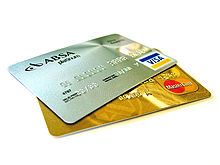We live in the age of shopping. And shopping ultimately creates economic growth. It is simply not enough for businesses to produce goods and services; consumers need to buy them as well. If consumers go slow on buying things, businesses don’t do well and this has an impact on economic growth.
As Yuval Noah Harari writes in Sapiens—A Brief History of Mankind: “It’s not enough just to produce. Somebody must also buy the products, or industrialists and investors alike will go bust. To prevent this catastrophe and to make sure that people will always buy whatever new stuff industry produces, a new kind of ethic appeared: consumerism.”
And how do you define consumerism? As Harari writes: “Consumerism sees the consumption of ever more products and services as a positive thing. It encourages people to treat themselves, spoil themselves and kill themselves slowly by overconsumption.”
One way in which consumerism has been pushed through into the society is through what Vance Packard called the ‘obsolescence of desirability’ in his 1960 book The Waste Makers. This was essentially marketing which was “designed to wear out a product in the owner’s mind”.
As Satyajit Das writes in his new book The Age of Stagnation: “New technologies were promoted as superior or modern, creating demand. Gramophone records were replaced successively by cassette tapes, CDs, MP3s, and digital media such as iTunes and live streaming…Although it made minimal difference to their enjoyment, people owned the same music in several different media, together with associated paraphernalia, creating a peculiar form of economic activity.”
This is an example I can relate to. I started buying cassettes in late eighties, then moved to CDs in the mid noughties and finally bought the same songs in the digital form. Now I simply listen to music on YouTube.
A similar obsolescence of desirability is visible when it comes to mobile phones. New phones give a lot of meaning to the lives of people and among the youth it’s a matter of huge pride to own the latest expensive smart phone, even if it means buying on EMIs. I have seen people give up on fully functional smart phones just because the latest version of the same or another smartphone, has hit the market.
This has been possible because of the easy availability of loans and credit cards. As Das writes: “Credit cards, which allowed individuals to buy now and pay-later, took the waiting out of wanting.”
Another way through which consumerism and buying more have been promoted is through the promotion of disposable items. As Das writes: “Re-use gave way to disposability in baby nappies, paper napkins and towels, and plastic and Styrofoam cups, bottles and containers. Kimberly-Clark promoted disposable Kleenex as a replacement for germ-filled handkerchiefs that apparently threatened public health. In a world of abundance, prolonging the useful life of products to save money was now unfashionable.”
This is something that Harari refers to as well. As he writes: “Manufacturers deliberately design short-term goods and invent new and unnecessary models of perfectly satisfactory products that we must purchase in order stay ‘in’.”
Then there are also cases of new products that try to cash in on human fear. A very good example of this is the hand sanitiser. As Martin Lindstrom writes in Brandwashed: “The idea of an unseen, potentially fatal contagion has driven us into nothing short of an antibacterial mania.”
Businesses have captured on this mania and turned it into a money making proposition. As Lindstrom put to me in an interview: “The companies have done an extraordinary job in building their brands on the back of the fear created by those global viruses – indicating that we’ll be safe using these brands…The ironic side of the story however is that the life expectancy in Japan is decreasing for the first time in history – why – because the country simply has become too clean – the Japanese have weakened their immune system as a result of overuse of hand sanitising products.”
And that is something worth thinking about.
(Vivek Kaul is the author of the Easy Money trilogy. He can be reached at [email protected])
The column originally appeared in Bangalore Mirror on January 20, 2016




